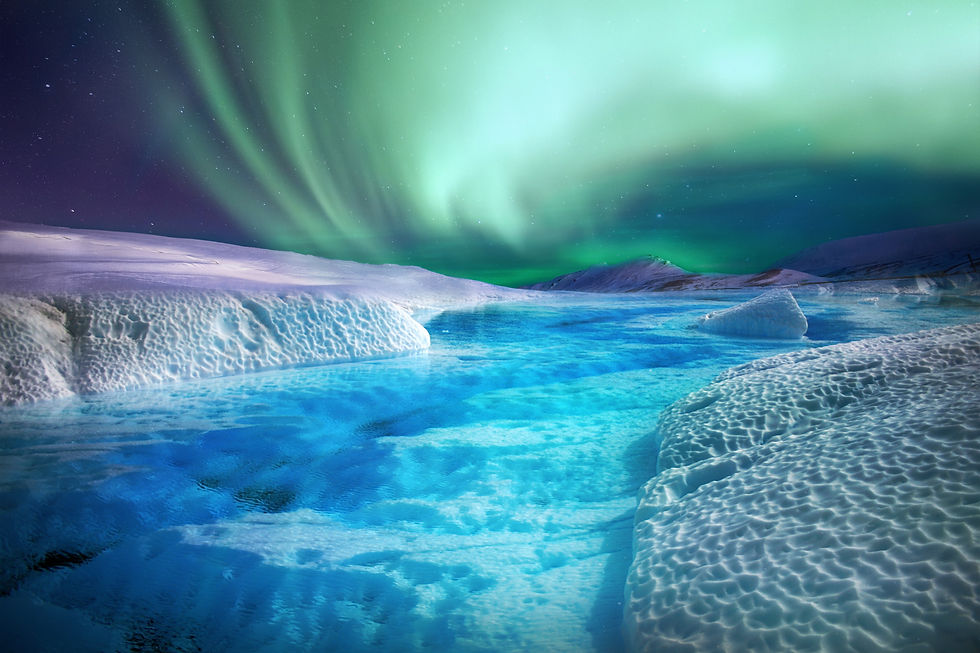
The Candy-Colored Nights
Aurora borealis is one of those phenomena that most humans never get to see in their lives.
Even for those briefly visiting the northern latitudes, the chance to witness these remains unpredictable. So, if you can get your children to see these northern lights on their family vacation to Iceland, you can bet they’re going to remember that occasion well into their adulthood.

But if you prefer a little more planning to improve your chances to feast your eyes on the candy-colored light shows that nature’s whimsy puts up around here, there’s help from physics. This is where you ought to study the weather website. Being this is in Iceland, you’ll actually be looking up www.vedur.is to find out your best chances to spot those flashes of light. A piece of advice: unless you’re fluent in Icelandic, make sure you turn translation on in Google.
.jpg)
Anyway, I figure a little science isn’t going to hurt at this juncture, so here goes. We all know that the Earth is a massive magnet, and just like a magnet, has two poles – a north and a south. Most don’t know that these magnetic poles in fact do not coincide with the geographical poles that we’re so used to seeing on world maps. That’s right! If you’re at the North Pole with your handy compass, where do you think it’s going to point? Not where you think it would. It would point towards Ellesmere Island in northern Canada, a place 300 miles to the north of your poor wayward compass? Why? Because that’s where the magnetic north pole is. At least in 2020. So yeah, it only gets better. This magnetic north pole changes its positions! Not only that, in little over a century, has traveled northward by about by 600 miles!

Science is always interesting, but we’re here to learn the techniques to maximize our chances to see the northern lights. So, suffice to know that the magnetic fields of our planet enter at the magnetic north pole, or a place that’s close to the geographical North Pole that we all know about, and this is where the action is. The bevy of magnetically charged solar particles coming our way from the Sun makes its entry along this pole, and in doing so, collides with Earth’s magnetosphere along that patch of busy superhighway. Voilà! Deep blues and florescent greens begin to dance in a wave formation throughout the sky. And when they do, it’s truly a sight to behold, and not only from the surface where you stand. Auroras are in fact visible from space, and so astronauts regularly capture their dazzling beauty from Earth orbit.

This slow dance of greens, reds, and purples, for us, was worth braving the bitter cold outside, as we returned late to our hotel from a busy day of sightseeing. It’s hard to spot if you’re not trying to look for it, and indeed, the first time it appeared in the sky you might think that your eyes were playing tricks on you, as I imagined mine did. Then, after I gave some time for my pupils to dilate, and after an ecstatic confirmation from the rest of the family, I realized I was looking right at it. There it was, shivering, turning, pulsating, as I gazed in wonder. It twisted and it turned, grooves appeared and then disappeared, and there seemed to be a definite “flow” from one side of the night sky to the other. What’s interesting is that it was nothing like I had imagined it to be. I always believed that these light shows were much like flashes of lightening in the sky, there for a fraction of a second and then gone erratically. What I found instead was that once it appeared, the colors in fact stayed for a while, twirling slowly in a manner reminiscent of a multicolored veil being blown around in the wind!
.jpg)
Yet, it’s good to keep in mind that the best images of auroras can only be captured by cameras. This is because of two factors. First, they’re dim enough that even when they put up their best shows you would not notice the same intensity of light on your retina to appreciate the colors as the ones you’ve probably seen on the glossy covers of travel magazines. Second, the wavelength at which they come out to be the brightest happens to fall past the red of the visible spectrum, meaning they start to fall off rapidly to the human eye, which can typically only see colors of wavelengths that lie between 400 and 700 nanometers.

Well, that ought to solve the mystery of these heavenly lights. As for how your children can get to see this dazzlingly magical sight, you might wish to consider booking those plane tickets.